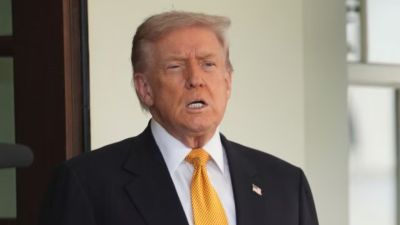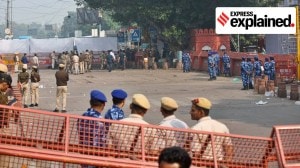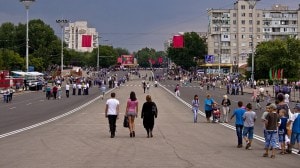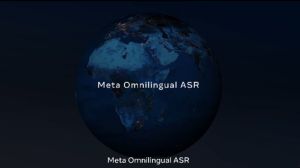Manas Srivastava leads the UPSC Essentials section of The Indian Express (digital). He majorly writes on UPSC, other competitive exams and education-related projects. In the past, Manas has represented India at the G-20 Youth Summit in Mexico. He is a former member of the Youth Council, GOI. A two-time topper/gold medallist in History (both in graduation and post-graduation) from Delhi University, he has mentored and taught UPSC aspirants for more than five years. His diverse role in The Indian Express consists of writing, editing, anchoring/ hosting, interviewing experts, and curating and simplifying news for the benefit of students. He hosts the YouTube talk show called ‘Art and Culture with Devdutt Pattanaik’ and a LIVE series on Instagram and YouTube called ‘LIVE with Manas’.His talks on ‘How to read a newspaper’ focus on newspaper reading as an essential habit for students. His articles and videos aim at finding solutions to the general queries of students and hence he believes in being students' editor, preparing them not just for any exam but helping them to become informed citizens. This is where he makes his teaching profession meet journalism. He is also the editor of UPSC Essentials' monthly magazine for the aspirants. He is a recipient of the Dip Chand Memorial Award, the Lala Ram Mohan Prize and Prof. Papiya Ghosh Memorial Prize for academic excellence. He was also awarded the University’s Post-Graduate Scholarship for pursuing M.A. in History where he chose to specialise in Ancient India due to his keen interest in Archaeology. He has also successfully completed a Certificate course on Women’s Studies by the Women’s Studies Development Centre, DU. As a part of N.S.S in the past, Manas has worked with national and international organisations and has shown keen interest and active participation in Social Service. He has led and been a part of projects involving areas such as gender sensitisation, persons with disability, helping slum dwellers, environment, adopting our heritage programme. He has also presented a case study on ‘Psychological stress among students’ at ICSQCC- Sri Lanka. As a compere for seminars and other events he likes to keep his orating hobby alive. His interests also lie in International Relations, Governance, Social issues, Essays and poetry. ... Read More
UPSC Essentials: Key terms of the past week with MCQs
Ninth schedule, beaver blood moon, interest-free banking and more— here's a highlight of some of the important terms useful for UPSC CSE Prelims and Mains preparation. Don't miss solving the MCQs.
 Key terms of the past week that you must not ignore. (REUTERS/Al Drago/File Photo )
Key terms of the past week that you must not ignore. (REUTERS/Al Drago/File Photo )Essential key terms from the last week’s news headlines or between the lines categorised as per the relevance to the UPSC-CSE syllabus along with the MCQs followed.
Ninth Schedule
Why in news?
— The Jharkhand Assembly on Friday (November 11) cleared two Bills, one increasing reservation in vacant government posts and services in the state to 77 per cent, and the second to use land records with 1932 as the cut-off year to determine domicile status the definition of ‘local residents’.
— However, the Bill came with a caveat — Chief Minister Hemant Soren said they would into force only after the Centre carries out amendments to include these in the Ninth Schedule of the Constitution.
What is the Ninth Schedule?
— The Ninth Schedule contains a list of central and state laws which cannot be challenged in courts. Currently, 284 such laws are shielded from judicial review. Most of the laws protected under the Schedule concern agriculture/land issues.
— The Schedule became a part of the Constitution in 1951, when the document was amended for the first time. It was created by the new Article 31B, which along with 31A was brought in by the government to protect laws related to agrarian reform and for abolishing the Zamindari system. While A. 31A extends protection to ‘classes’ of laws, A. 31B shields specific laws or enactments.
— Article 31B reads: “Without prejudice to the generality of the provisions contained in article 31A, none of the Acts and Regulations specified in the Ninth Schedule nor any of the provisions thereof shall be deemed to be void, or ever to have become void, on the ground that such Act, Regulation or provision is inconsistent with, or takes away or abridges any of the rights conferred by, any provisions of this Part, and notwithstanding any judgment, decree or order of any court or Tribunal to the contrary, each of the said Acts and Regulations shall, subject to the power of any competent Legislature to repeal or amend it, continue in force.”
— The First Amendment added 13 laws to the Schedule. Subsequent amendments in 1955, 1964, 1971, 1974, 1975, 1976, 1984, 1990, 1994, and 1999 have taken the number of protected laws to 284.
Are laws in the Ninth Schedule completely exempt from judicial scrutiny?
— While the Ninth Schedule provides the law with a “safe harbour” from judicial review, the protection is not blanket.
— When the Tamil Nadu law was challenged in 2007 (I R Coelho v State of Tamil Nadu), the Supreme Court ruled in a unanimous nine-judge verdict that while laws placed under Ninth Schedule cannot be challenged on the grounds of violation of fundamental rights, they can be challenged on the ground of violating the basic structure of the Constitution.
— The court clarified that the laws cannot escape the “basic structure” test if inserted into the Ninth Schedule after 1973, as it was in 1973 that the basic structure test was evolved in the Kesavananda Bharati case as the ultimate test to examine the constitutional validity of laws.
— The IR Coelho verdict said, “A law that abrogates or abridges rights guaranteed by Part III of the Constitution may violate the basic structure doctrine or it may not. If former is the consequence of law, whether by amendment of any Article of Part III or by an insertion in the Ninth Schedule, such law will have to be invalidated in exercise of judicial review power of the Court.”
Why the need to include in Ninth Schedule
— The 77 per cent reservation breaches the 50 per cent ceiling set by the Supreme Court in the landmark 1992 Indra Sawhney v Union of India verdict. However, placing a legislation in the Ninth Schedule shields it from judicial scrutiny.
Previous instances — Tamil Nadu’s case
— The Tamil Nadu Backward Classes, Scheduled Castes and Scheduled Tribes (Reservation of Seats in Educational Institutions and of Appointments or Posts in the Services under the State) Act, 1993, reserves 69 per cent of the seats in colleges and jobs in the state government.
— When it ran into legal obstacles in the 1990s after the SC verdict, the then Chief Minister Jayalalithaa, along with other leaders of various parties, led a delegation to New Delhi to meet the then Prime Minister PV Narasimha Rao. The reservation provision was then included in the Ninth Schedule.
Point to ponder: 103rd Constitutional amendment introducing a 10 per cent quota for Economically Weaker Sections (EWS), the Supreme Court on Monday endorsed a crucial shift in affirmative action from being a tool for enabling community-based representation to tackling individual deprivation. Do you agree?
1. MCQ:
Consider the following statements (2018):
- The Parliament of India can place a particular law in the Ninth Schedule of the Constitution of India.
- The validity of a law placed in the Ninth Schedule cannot be examined by any court and no judgement can be made on it.
Which of the statements given above is/are correct?
(a) 1 only
(b) 2 only
(c) Both 1 and 2
(d) Neither 1 nor 2
Mangrove Alliance for Climate
Why in news?
— At the 27th Session of Conference of Parties (COP27), this year’s UN climate summit, the Mangrove Alliance for Climate (MAC) was launched with India as a partner on Tuesday (November 8). The move, in line with India’s goal to increase its carbon sink, will see New Delhi collaborating with Sri Lanka, Indonesia and other countries to preserve and restore the mangrove forests in the region.
— Attending the event in Sharm El-Sheikh, Egypt on Tuesday, Union Minister for Environment Forest and Climate Change Bhupender Yadav said that India is home to one of the largest remaining areas of mangroves in the world — the Sundarbans — and has years of expertise in restoration of mangrove cover that can be used to aid global measures in this direction.
KEY TAKEAWAYS
The MAC
— An initiative led by the United Arab Emirates (UAE) and Indonesia, the Mangrove Alliance for Climate (MAC) includes India, Sri Lanka, Australia, Japan, and Spain. It seeks to educate and spread awareness worldwide on the role of mangroves in curbing global warming and its potential as a solution for climate change.
— However, the intergovernmental alliance works on a voluntary basis which means that there are no real checks and balances to hold members accountable. Instead, the parties will decide their own commitments and deadlines regarding planting and restoring mangroves. The members will also share expertise and support each other in researching, managing and protecting coastal areas.
The current state of the mangroves
— South Asia houses some of the most extensive areas of mangroves globally, while Indonesia hosts one-fifth of the overall amount.
— India holds around 3 percent of South Asia’s mangrove population. Besides the Sundarbans in West Bengal, the Andamans region, the Kachchh and Jamnagar areas in Gujarat too have substantial mangrove cover.
— However, infrastructure projects — industrial expansion and building of roads and railways, and natural processes shifting coastlines, coastal erosion and storms, have resulted in a significant decrease in mangrove habitats.
— Between 2010 and 2020, around 600 sq km of mangroves were lost of which more than 62% was due to direct human impacts, the Global Mangrove Alliance said in its 2022 report.
The significance of mangroves
— Mangroves have been the focus of conservationists for years and it is difficult to overstate their importance in the global climate context. Mangrove forests — consisting of trees and shrub that
live in intertidal water in coastal areas — host diverse marine life. They also support a rich food web, with molluscs and algae-filled substrate acting as a breeding ground for small fish, mud crabs and shrimps, thus providing a livelihood to local artisanal fishers.
— Equally importantly, they act as effective carbon stores, holding up to four times the amount of carbon as other forested ecosystems. Mangrove forests capture vast amounts of carbon dioxide from the atmosphere and their preservation can both aid in removal of carbon from the atmosphere and prevent the release of the same upon their destruction.
(Source: What is the Mangrove Alliance for Climate, which India joined at COP27? by Navmi Krishna)
Point to ponder: How mangroves are affected by climate change?
2. MCQ:
The 2004 Tsunami made people realize that mangroves can serve as a reliable safety hedge against coastal calamities. How do mangroves function as a safety hedge? (2011)
a) The mangrove swamps separate the human settlements from the sea by a wide zone in which people neither live nor venture out
b) The mangroves provide both food and medicines that people are in need of after any natural disaster.
c) The mangrove trees are tall with dense canopies and serve as an excellent shelter during a cyclone or tsunami
d) The mangrove trees do not get uprooted by storms and tides because of their extensive roots.
Greenwashing
Why in news?
— In the first official acknowledgment of ‘greenwashing’, UN Secretary General Antonio Guterres on Tuesday warned private corporations to desist from such practices and mend their ways within a year. There will be zero tolerance for greenwashing, he said at the ongoing climate meeting in Sharm el-Shaikh.
KEY TAKEAWAYS
— The use of unfair practices in climate action is not new. Corporations, and sometimes even countries, attempt to exaggerate the actions they are taking to help the fight against climate change, and also the impacts of these actions. In the process, they provide misleading information, make unverifiable claims, and sometimes plainly lie about their products or processes.
— There is a growing tendency among firms and governments to mark all kinds of activities as climate-friendly, as something that would lead to emissions reduction, or avoidance of emissions. Many of these claims are unverifiable, misleading, or dubious. While they help in boosting the image of the entity, sometimes even helping them garner benefits, they do nothing in the fight against climate change.
— While Guterres spoke against greenwashing in the context of net-zero targets being pursued by many corporations and sub-national governments, greenwashing is prevalent across a whole range of environmental activities. Developed countries, for example, are often accused of greenwashing their normal business investments in developing countries, or their bilateral aid, by highlighting climate co-benefits of the financial flows, sometimes with very little justification.
— The Volkswagen scandal, in which the German car company was found to have been cheating in emissions testing of its supposedly green diesel vehicles, was a case of greenwashing. Several other multinational corporations, including oil giants like Shell and BP, and Coca Cola have faced accusations of greenwashing.
— Greenwashing presents a false picture of the progress being made on the climate change front, thereby pushing the world towards disaster, while at the same time rewarding entities for irresponsible behaviour.
Fairly widespread
— The processes and products that can potentially cut emissions are so many that it is practically impossible to monitor and verify all. There is lack of regulation and standardisation in most of these spaces. The processes, methodologies and institutions to measure, report, create standards, verify claims and grant certifications are still being set up.
— In the meanwhile, large number of organisations have sprung up claiming expertise in these areas and offering their services for a fee. Many of these organisations lack integrity and robustness, but their services are still availed by corporations because it makes them look good.
Credits and offsets
— The trade in carbon credits comes under the scanner in any discussion on greenwashing. Carbon trade is a legitimate exercise. In fact, it is officially encouraged. Countries or firms that reduce emissions beyond their mandate are granted carbon credits, which can then be bought for money by entities that need it to achieve their targets. There was a carbon market under the Kyoto Protocol, and a new one is being created under the Paris Agreement as well.
— But the scope of carbon markets has increased manifold since it was first conceptualised. Informal carbon markets also exist. There are now credits available for all kinds of activities — for growing trees, for planting a certain kind of crop, for installing energy-efficient equipment in office buildings. Basically, any activity that has the potential to reduce or avoid emissions can earn credits. The credits are often certified by unofficial third party companies and sold to others. Such transactions, particularly in informal, bilateral or voluntary markets, have been flagged for lack of integrity and double counting.
— Even the official market is not immune to charges of double counting and greenwashing. Countries like India or Brazil had accumulated huge carbon credits under the Kyoto Protocol and wanted these to be transitioned to the new market being set up under the Paris Agreement. But many developed countries resisted this, questioning the integrity of the credits and claiming they did not accurately represent reductions in emissions. Carbon offsets from forests are one of the most controversial.
The way forward
— An expert group formed by the UN Secretary General last year to suggest remedial actions on this front submitted its report Tuesday. Among other things, it recommended that corporations pursuing net zero targets must not be allowed to make fresh investments in fossil fuels, must be asked to present short-term emission reduction goals on the path to achieving net zero, and must bring an end to all activities that lead to deforestation. In addition, the corporations have been advised not to use offset mechanisms at the start of their journey to net-zero status.
— The expert group has also recommended the creation of regulatory structures and standards as soon as possible.
— While the measures are likely to curb these activities to some extent, it is also true that the entire architecture of global fight against climate change is based on trust. There are elements of measurement, reporting and verification, but as mentioned earlier, the vast array of activities makes it extremely difficult, if not entirely impossible, to police every process and product.
(Source: Red flags over ‘greenwashing’ at COP27 — what is it? by Amitabh Sinha)
Why in news?
— Pakistan’s Finance Minister Ishaq Dar announced on Wednesday (November 9) that the government would introduce interest-free banking in the country, marking a significant departure from its earlier opposition to the policy.
— In a report submitted to the government in 2008, a committee headed by Raghuram Rajan had, without naming Sharia banking, suggested the need to have interest-free banking in India.
KEY TAKEAWAYS
What is interest-free banking?
— Islamic banking refers to banking activity that conforms to laws and values laid down by Islamic law or Sharia. The basis of Islamic finance is the rejection of usury (the levying of unreasonable high interest rates) while lending money, along with the requirement that there must not be any engagement with immoral businesses.
— Interest free banking is a narrow concept within this system, that denotes a number of banking operations which avoid interest. Riba is the Islamic term for interest charges on loans, and according to the current interpretation, covers all interest — not just excessive interest. Under Islamic law, a Muslim is prohibited from paying and accepting interest on a predetermined rate.
— As per Islamic banking, money can only be parked in a bank without interest and cannot be used for speculative trading, gambling, or trading in prohibited commodities such as alcohol or pork.
How can a bank work without levying interest?
— While banking is premised on charging interest while lending, and paying interest on deposits, there are a number of financial institutions even in the West, that also structure their accounts in Sharia compliant ways. In 2015, Germany opened its first Sharia compliant bank in Frankfurt, BBC had earlier reported.
— Various instruments are available for those who want to take credit from a Sharia compliant bank. In an Ijarah contract, a bank purchases the asset on behalf of the client and allows its usage for a fixed rental rate. After a mutually agreed time, the ownership of the asset is transferred to the client.
— Another instrument is Murabaha, which means a sale on mutually agreed profits. In this financing technique, an asset is purchased by the bank at a market price and sold to the customer at a mutually-decided marked-up cost. The client is allowed to repay in instalments.
— Musharaka refers to a joint investment by the bank and the client. Under the agreement, an Islamic bank provides funds, which are mixed with the funds of the business enterprise and others. The bank and the client both contribute to the funding of an investment of purchase, and agree to share the profit or loss in agreed-upon proportions.
Interest-free banking in India
— In a report submitted to the government in 2008, a committee headed by Raghuram Rajan had, without naming Sharia banking, suggested the need to have interest-free banking in India. “The non-availability of interest-free banking products (where the return to the investor is tied to the bearing of risk, in accordance with the principles of that faith) results in some Indians, including those in the economically disadvantaged strata of society, not being able to access banking products and services due to reasons of faith. This non-availability also denies India access to substantial sources of savings from other countries in the region,” the report said
— The Reserve Bank of India (RBI) in 2016 had suggested that given the complexities of Islamic finance and various regulatory challenges involved, Islamic banking could be gradually introduced through the opening of an “Islamic window” in conventional banks.
— While replying to a RTI query in 2017, the RBI however said that it had decided to not pursue the proposal for introducing Islamic banking in the country.
Point to ponder: What banking system liquidity going into ‘deficit mode’ means?
4. MCQ:
If the interest rate is decreased in an economy, it will (2014)
a) decrease the consumption expenditure in the economy
b) increase the tax collection of the Government
c) increase the investment expenditure in the economy
d) increase the total savings in the economy
Beaver blood moon
Why in news?
— ‘Beaver blood moon’ offers world’s last total lunar eclipse until 2025
KEY TAKEAWAYS
— A total lunar eclipse occurs when the Earth casts its shadow completely over a full moon, blocking reflection of all direct sunlight from the lunar orb and dimming the color of the moon to a reddish hue, hence the term “blood moon.”
— This is only possible when the orbits of the Earth, moon and sun align so that the moon is directly behind Earth relative to the sun. Otherwise, the moon passes above or below Earth’s shadow because its orbit around Earth is usually tilted relative to Earth’s orbit about the sun.
Why red?
— The reddish appearance of the lunar surface — the moon does not entirely disappear from view — is caused by rays of sunlight around the outer edge of the eclipse shadow, or umbra, being filtered and refracted as it passes through Earth’s atmosphere, bathing the moon indirectly in a dim copper glow.
— The degree of redness depends on atmospheric conditions that vary with levels of air pollution, dust storms, wildfire smoke and even volcanic ash.
How rare?
— Total lunar eclipses occur, on average, about once every year and a half, according to NASA. But the interval varies. Tuesday’s event marked the second blood moon this year, following one in mid-May. The next one is not expected until March 14, 2025.
How long it lasted?
— The entire eclipse unfolded over a period of nearly six hours as the moon gradually edged into the Earth’s paler, outer shadow, its “penumbra,” then entered the Earth’s darker, inner shadow, or “umbra,” before reaching totality and eventually emerging from the other side.
Point to ponder: What if there was no moon?
5. MCQ:
Tides occur in the oceans and seas due to which among the following?
- Gravitational force of the Sun
- Gravitational force of the Moon
- Centrifugal force of the Earth
Select the correct answer using the code given below.
(a) 1 only
(b) 2 and 3 only
(c) 1 and 3 only
(d) 1, 2 and 3
Answers to the MCQs: 1 (a), 2 (d), 3 (c), 4 (c), 5 (d)
UPSC Magazine

Read UPSC Magazine



- 01
- 02
- 03
- 04
- 05





























